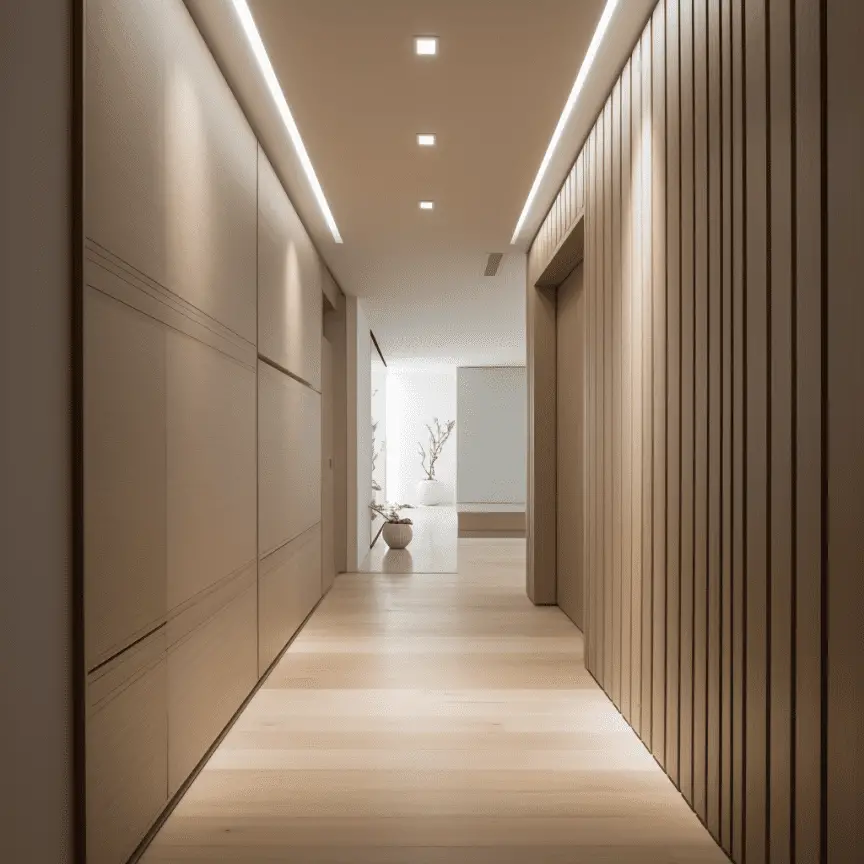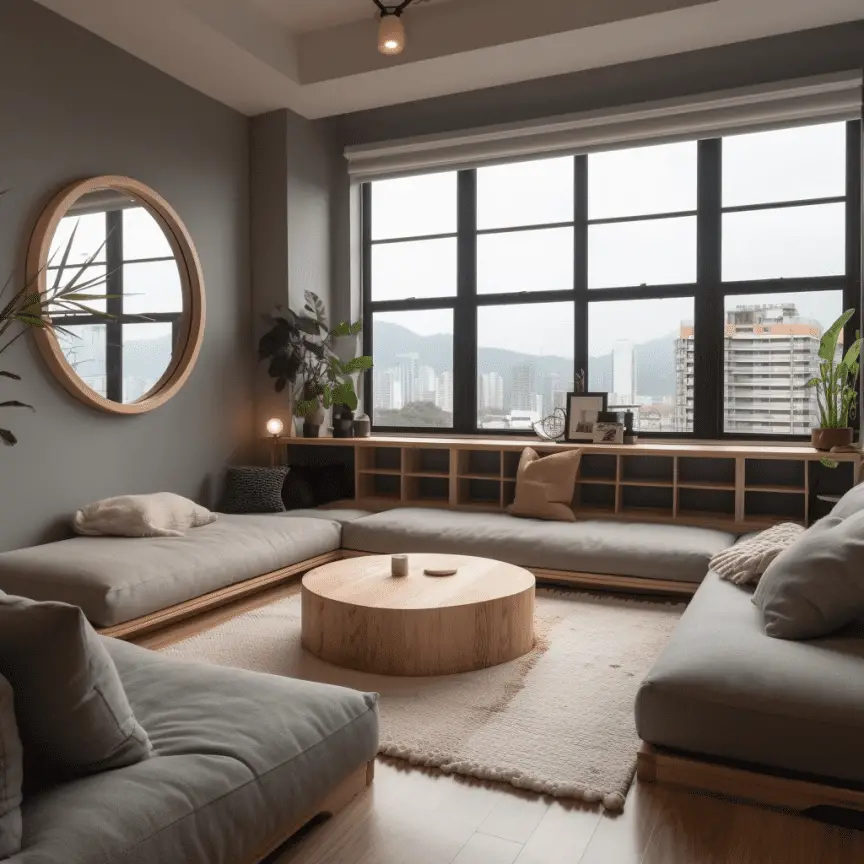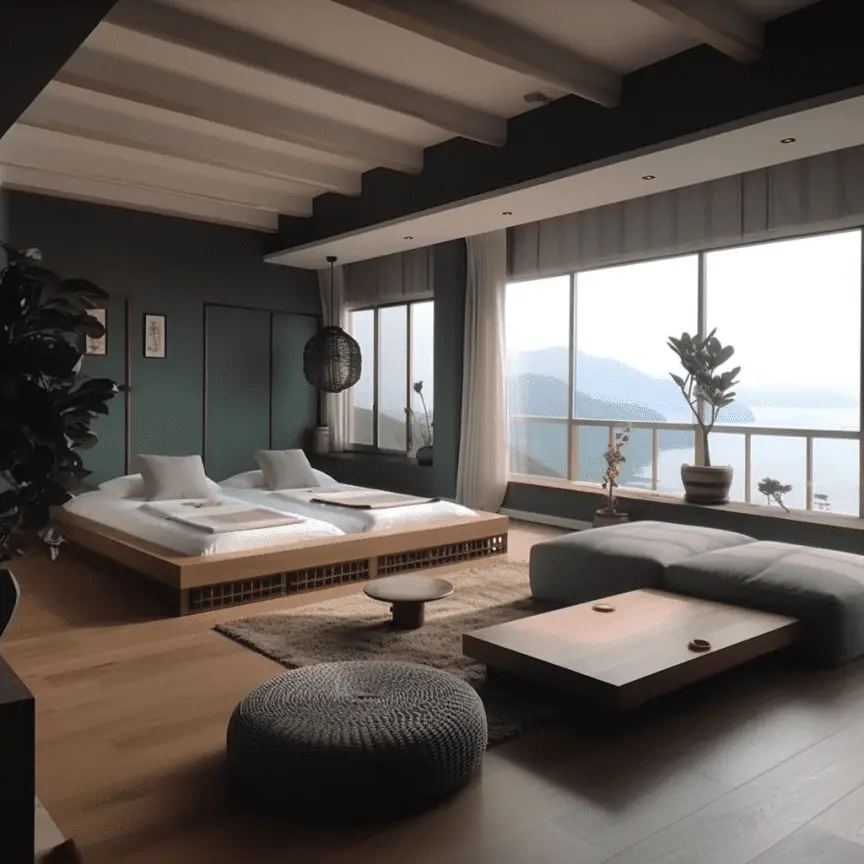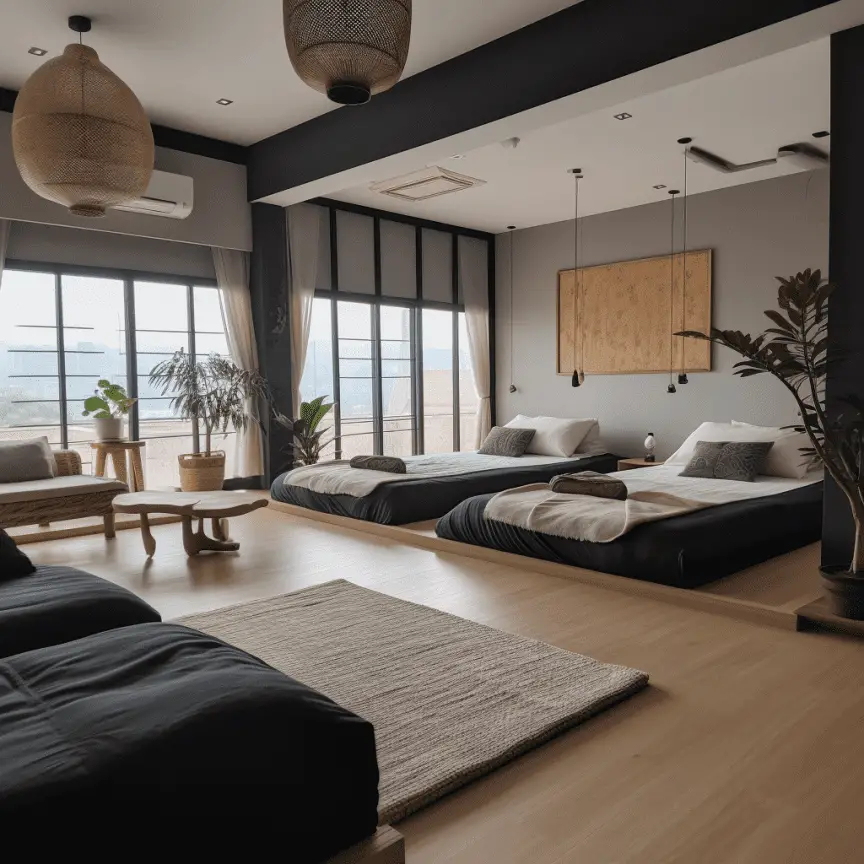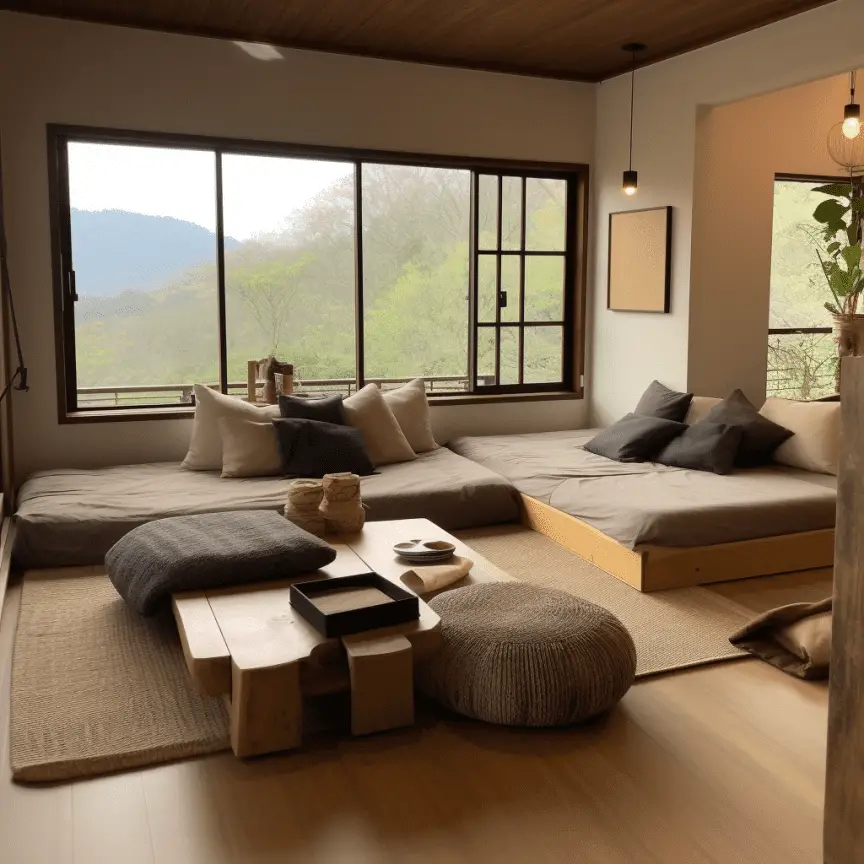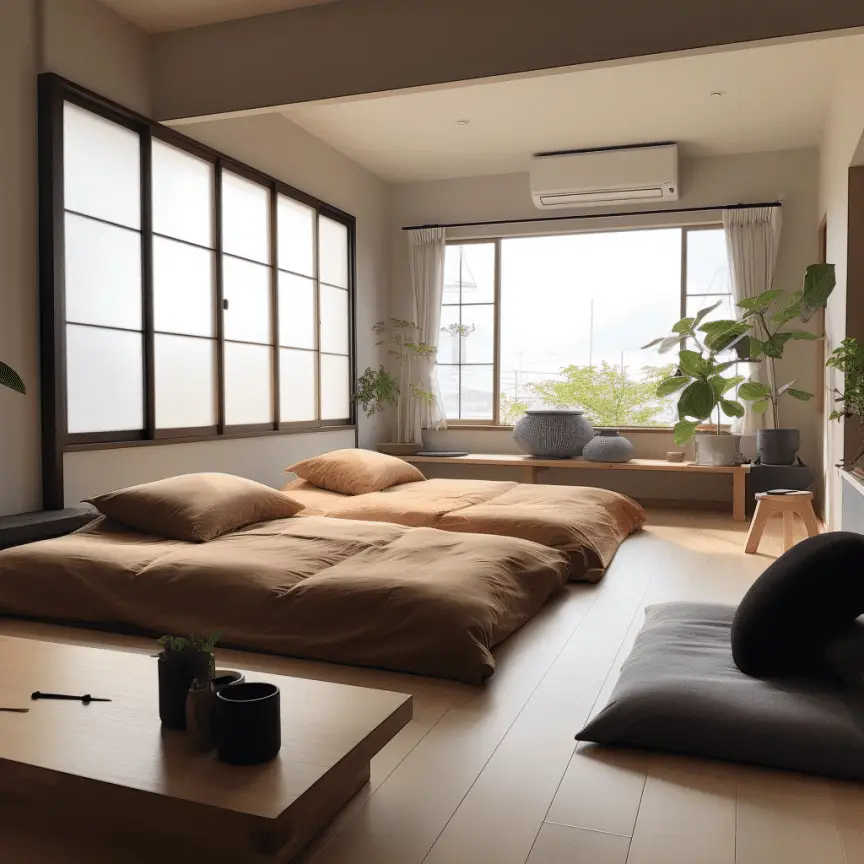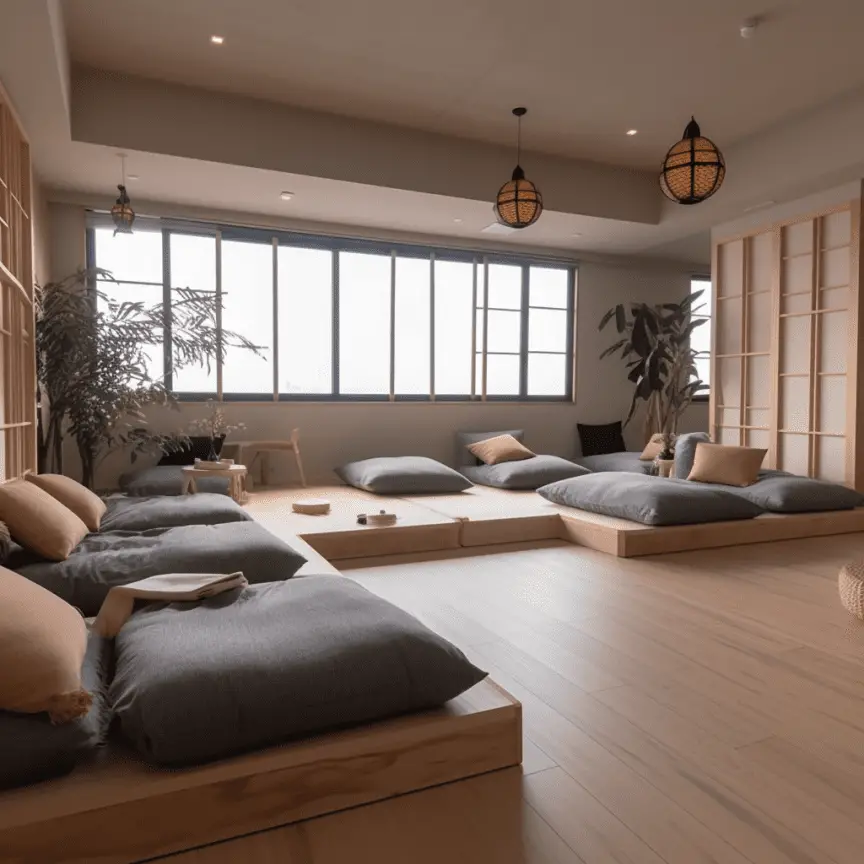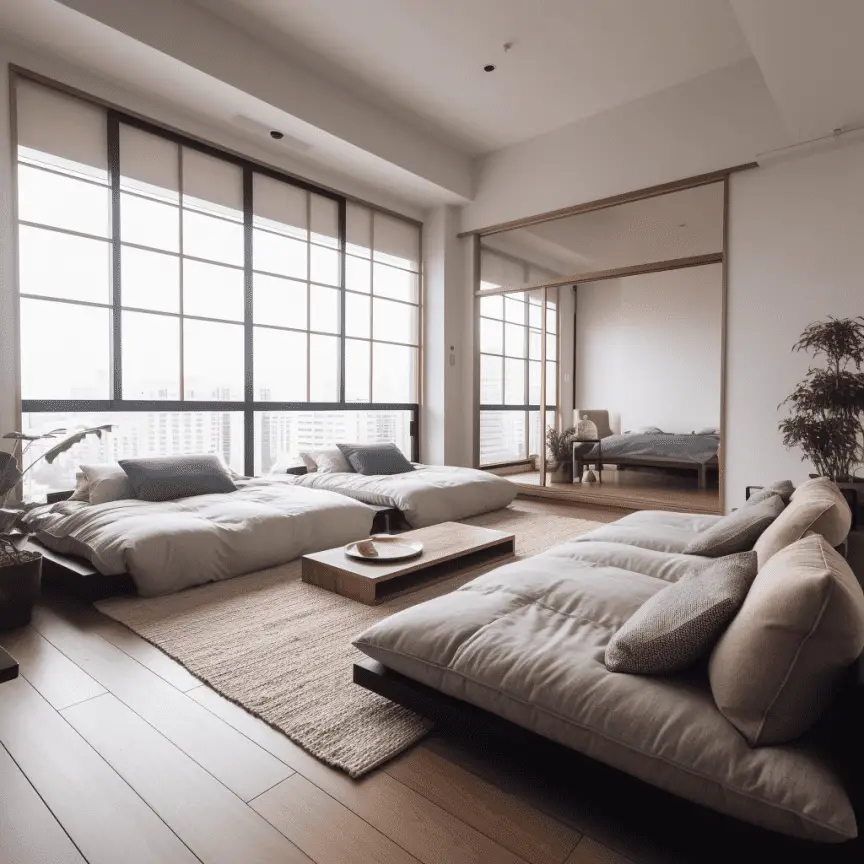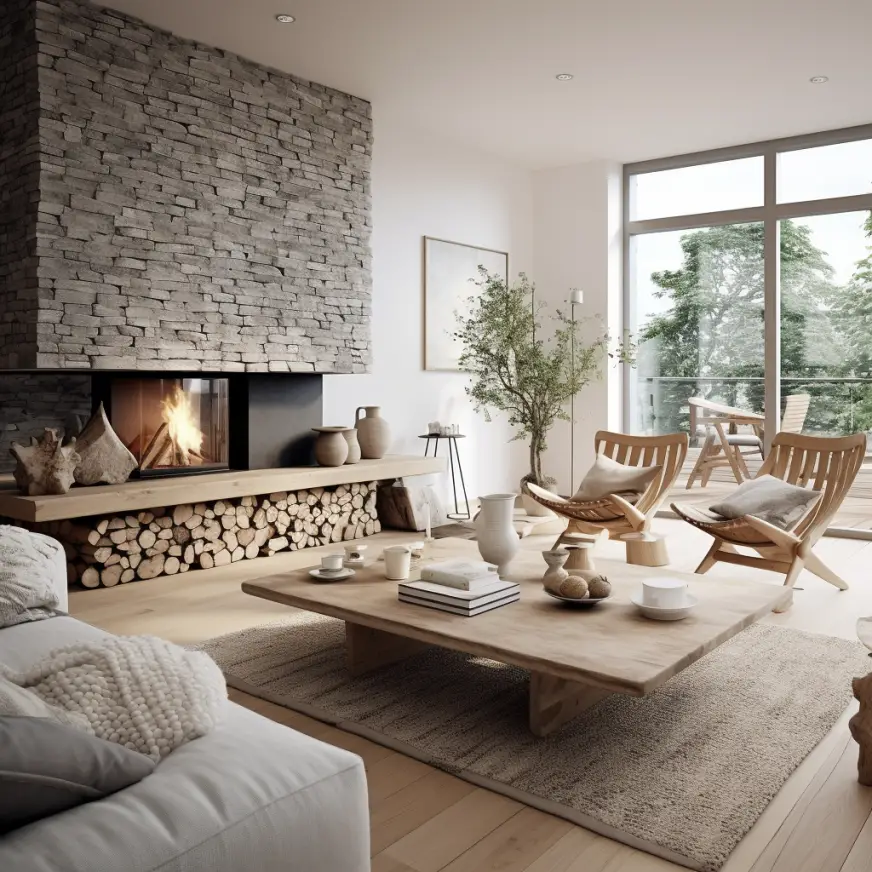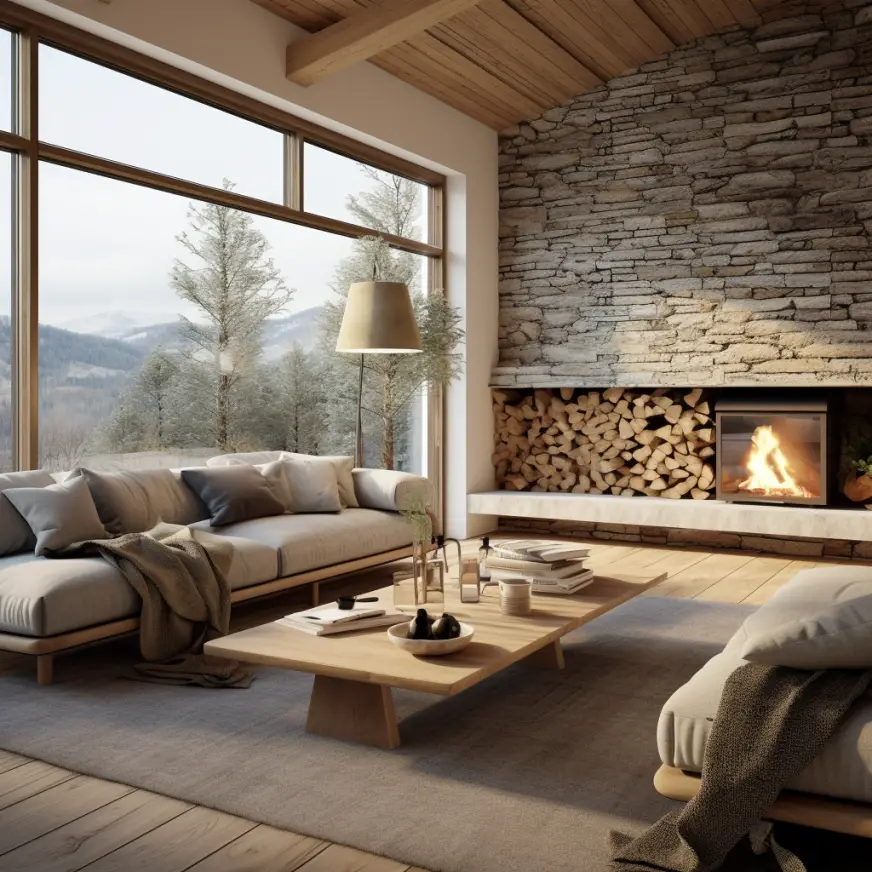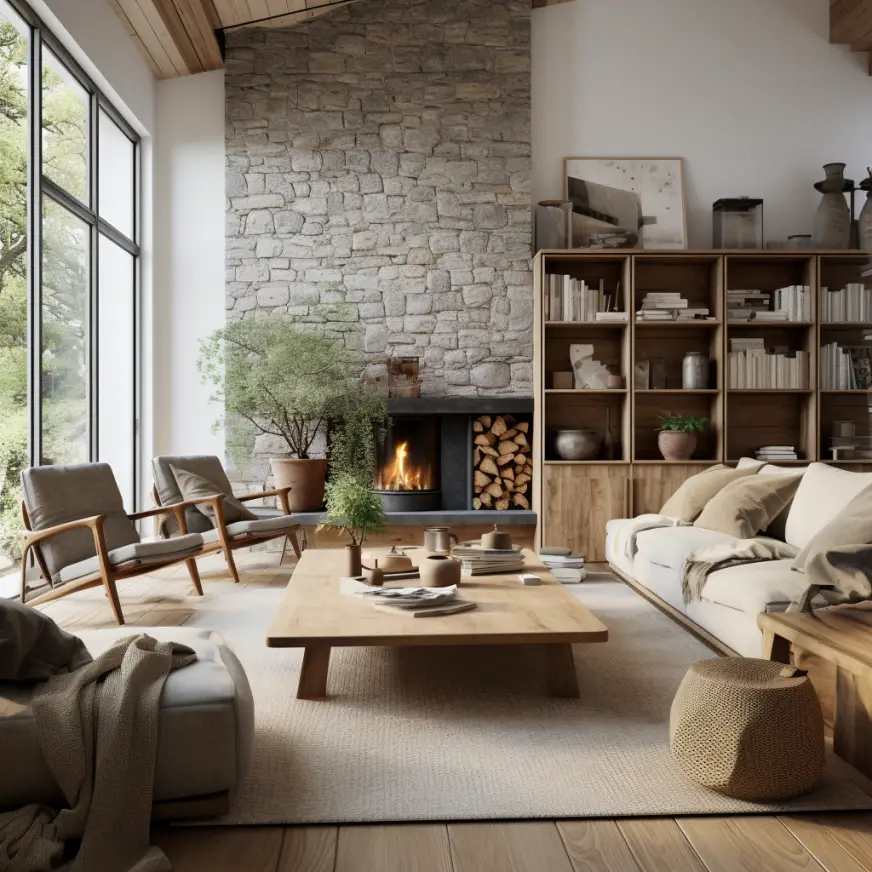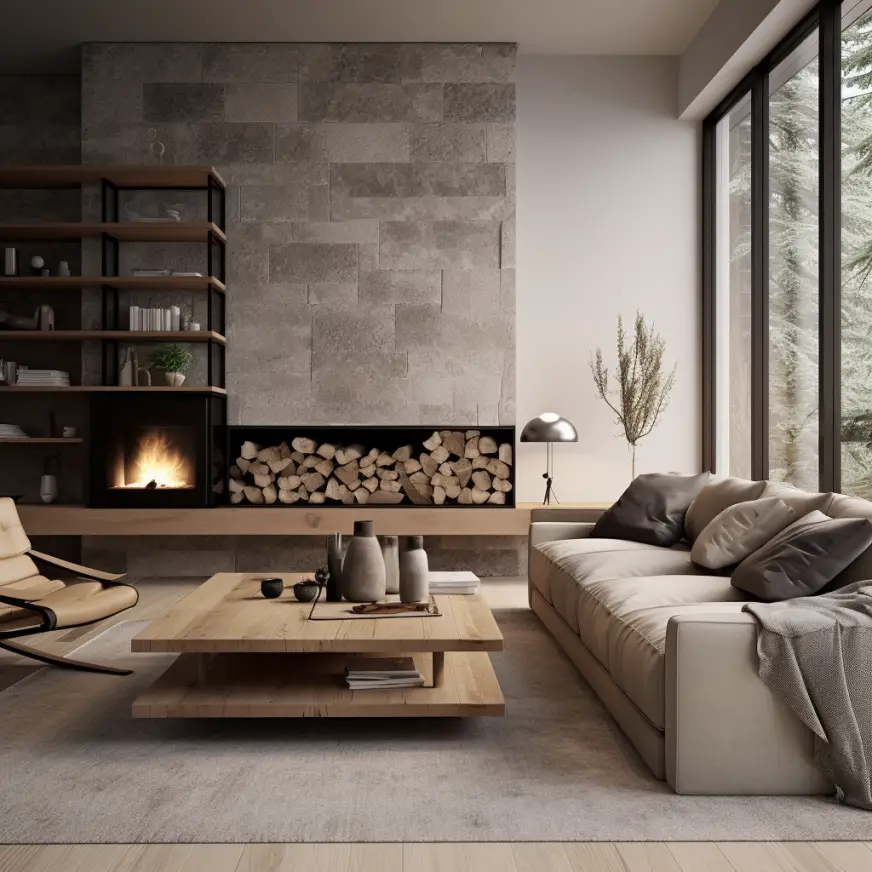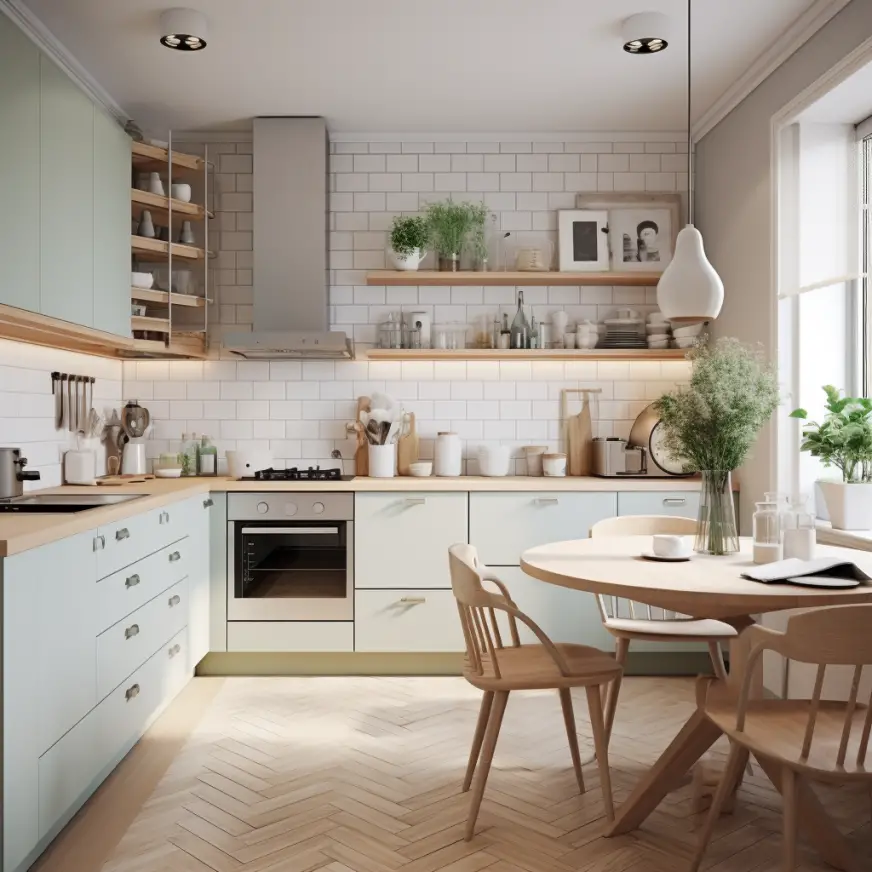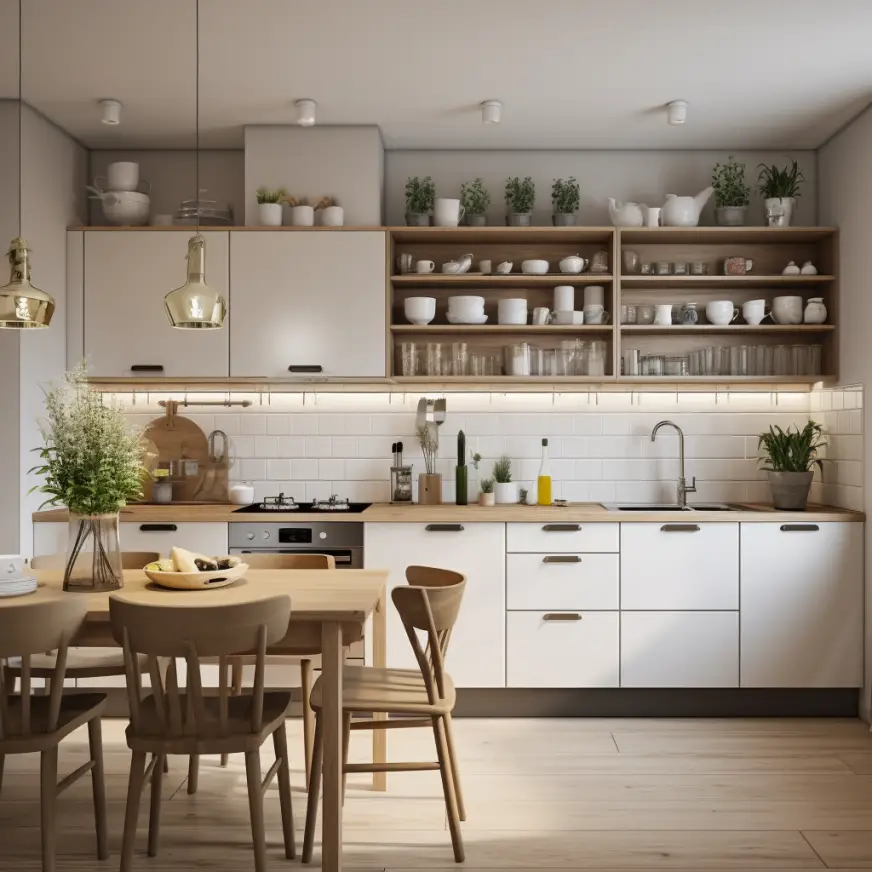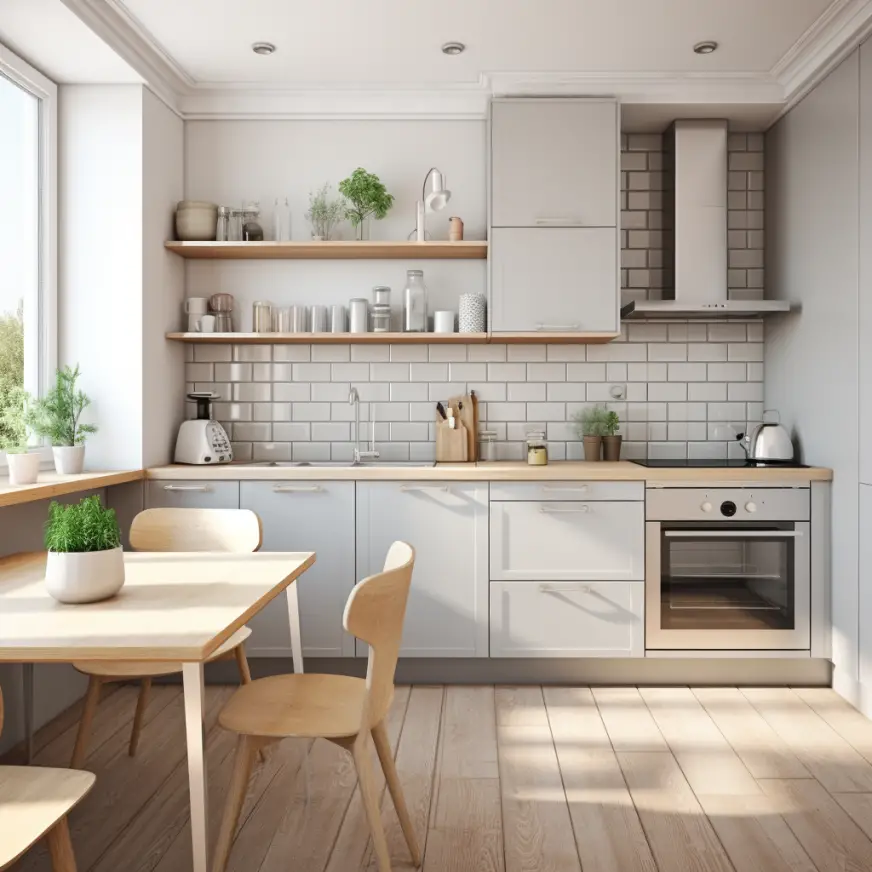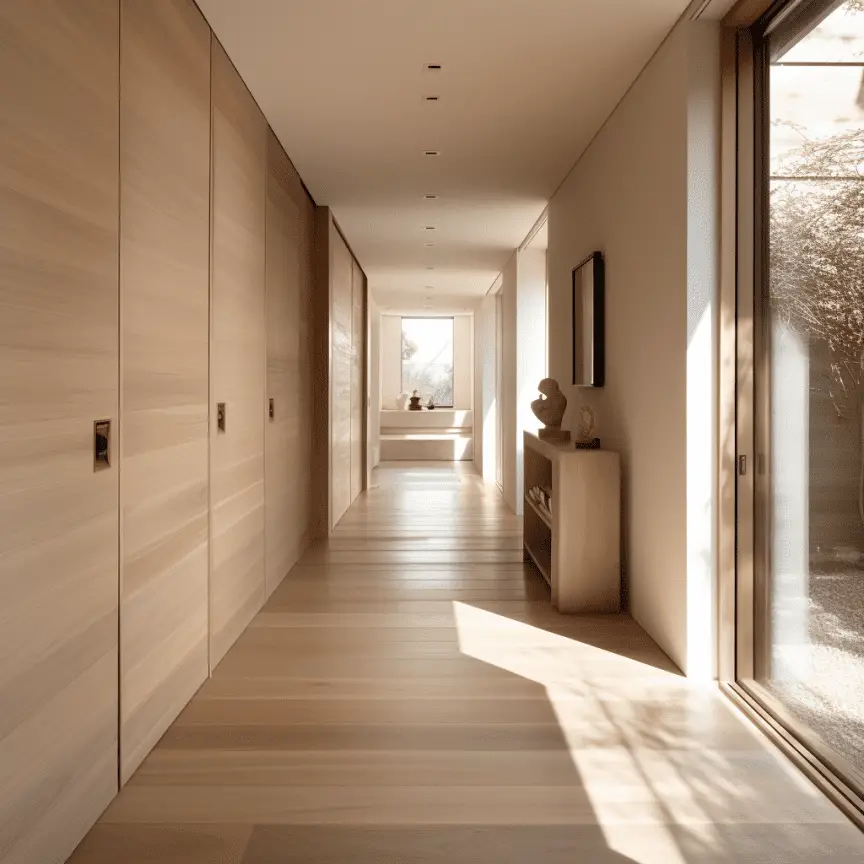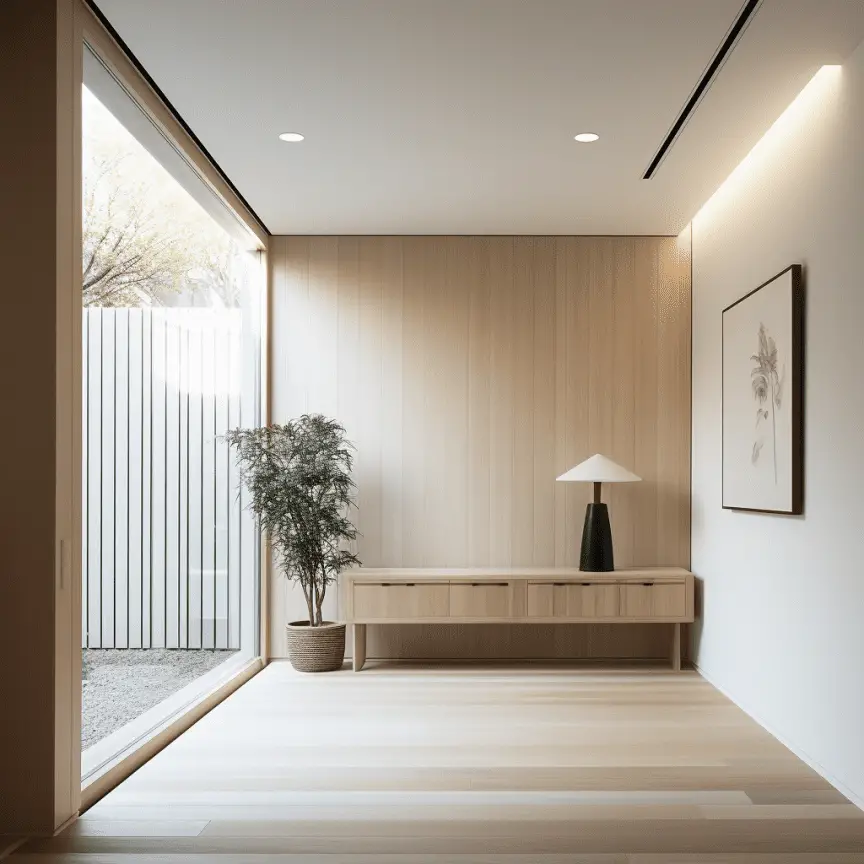Japandi, a portmanteau of “Japanese” and “Scandinavian,” is an interior design style that combines the simplicity and minimalism of both Japanese and Scandinavian design philosophies. This unique fusion creates a harmonious and elegant living space that celebrates the best of both worlds. In this article, we will delve into the history of Japandi Interior Design Style, explore its key elements, and provide guidance on how to incorporate this style into your home.
Table of Contents
Where does it come from?
The Japandi design movement is a relatively recent trend that has gained significant popularity over the past few years. It can be traced back to the increased appreciation for minimalist aesthetics and a desire for a more mindful and sustainable way of living. Both Japanese and Scandinavian design styles share similarities in their emphasis on simplicity, functionality, and the use of natural materials. The combination of these two design styles in Japandi creates a unique, balanced, and soothing atmosphere in any living space.

5 key Elements define Japandi Interior design

Simplicity and minimalism
Japandi design is characterized by its simplicity and minimalism. Clutter-free spaces and clean lines are hallmarks of this design style, allowing for a serene and calming atmosphere.

Natural materials
Both Japanese and Scandinavian design styles emphasize the use of natural materials such as wood, stone, and bamboo. Incorporating these materials in your Japandi interior not only adds warmth and texture but also creates a strong connection to nature.

Neutral color palette
Japandi interiors typically showcase a neutral color palette, with shades of white, beige, gray, and muted pastels. These colors create a soothing backdrop for the space and allow the natural materials and textures to shine.

Functionality
Just like its Japanese and Scandinavian influences, Japandi design places a strong emphasis on functionality. Furniture and accessories should serve a purpose and be thoughtfully chosen to avoid clutter.

Contrast and balance
Japandi style is all about striking the perfect balance between the two design styles. Mixing the light, airy feel of Scandinavian design with the more grounded and earthy tones of Japanese design creates a harmonious and visually appealing space.
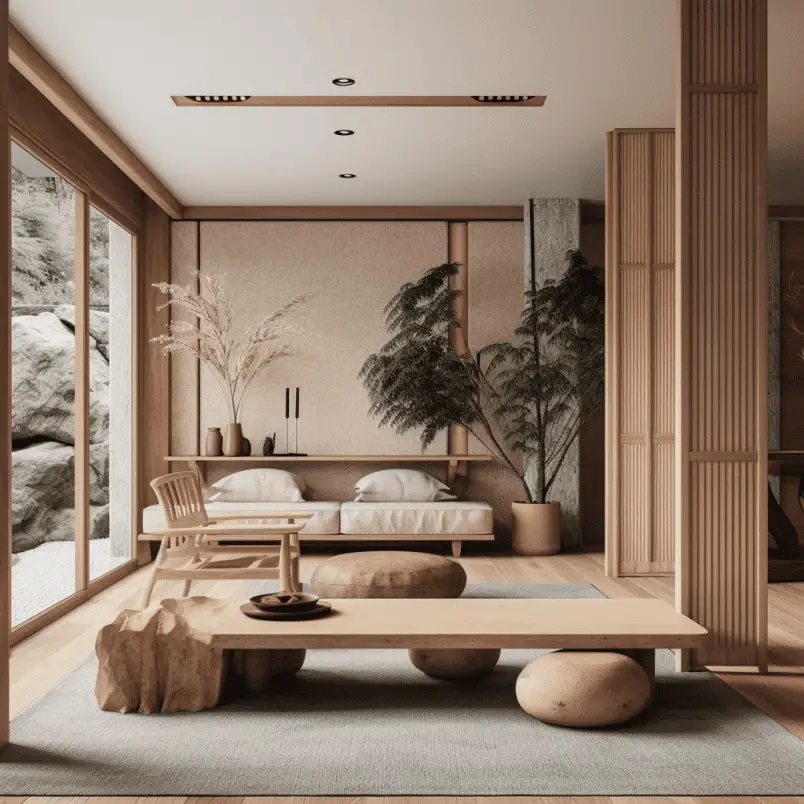
5 Steps to create a Japandi vibe in your home
- Declutter and simplify: To create a Japandi-style space, start by decluttering and removing any unnecessary items. A clutter-free environment is essential to achieving the calming and minimalist atmosphere characteristic of Japandi design.
- Choose natural materials: Opt for furniture and accessories made of natural materials, such as wood, bamboo, or stone. These materials not only bring warmth and texture to your space but also help create a strong connection to nature.
- Select a neutral color palette: Incorporate a neutral color palette with shades of white, beige, gray, and muted pastels to create a serene and calming atmosphere. Use these colors as the foundation for your space, allowing the natural materials and textures to take center stage.
- Focus on functionality: Choose furniture and accessories that serve a purpose and contribute to the overall functionality of your space. Be mindful of the items you incorporate and avoid unnecessary clutter.
- Create contrast and balance: Combine the light and airy feel of Scandinavian design with the more grounded and earthy tones of Japanese design. Mixing and balancing these elements will result in a harmonious and visually appealing Japandi interior.

Japandi Styles in different rooms
Living room
Use a mix of natural wood tones, such as light Scandinavian-style wood and darker Japanese-style wood, to create a balanced and inviting space. Add cozy textiles like wool or linen, and incorporate functional furniture with clean lines.

Bedroom
Opt for a minimalist platform bed and simple, neutral bedding to create a calming and restful atmosphere. Include plants and natural elements, such as wood or stone, to enhance the connection to nature.
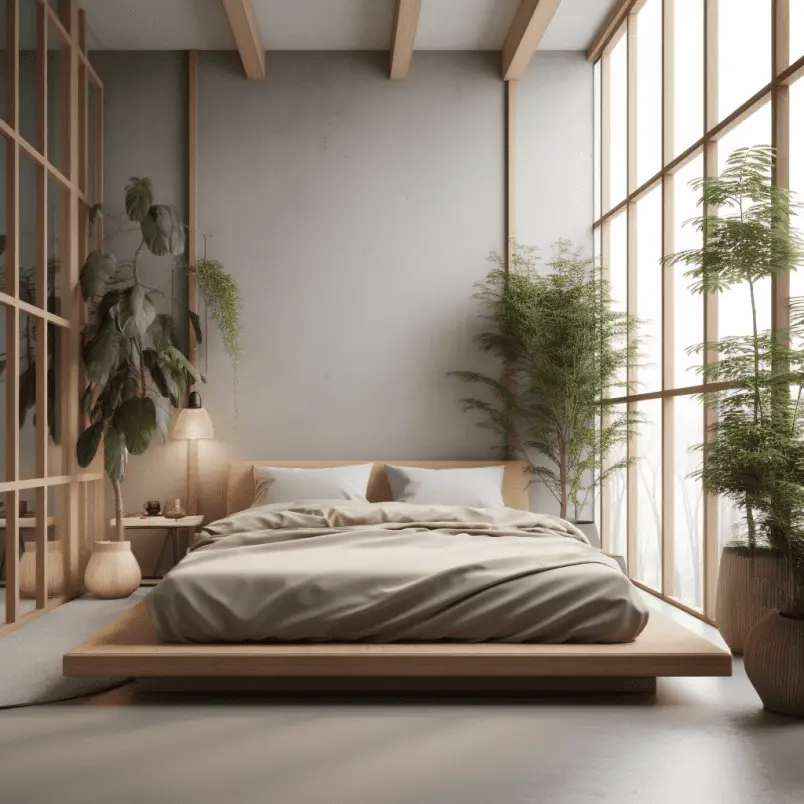
Kitchen
Choose sleek, functional cabinetry and countertops in neutral tones. Add pops of color with ceramic dishware or utensils, and incorporate open shelving to display your favorite kitchen items while maintaining a sense of openness and simplicity.
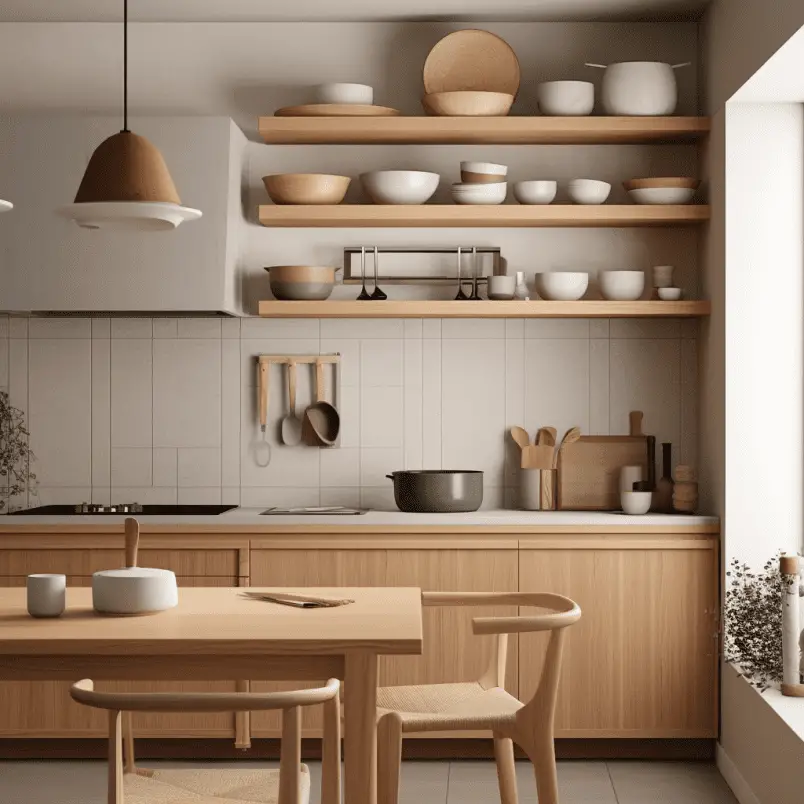
Bathroom
Use natural materials like wood and stone for countertops, flooring, and accessories. Incorporate clean lines and minimalist fixtures to create a serene and spa-like atmosphere.
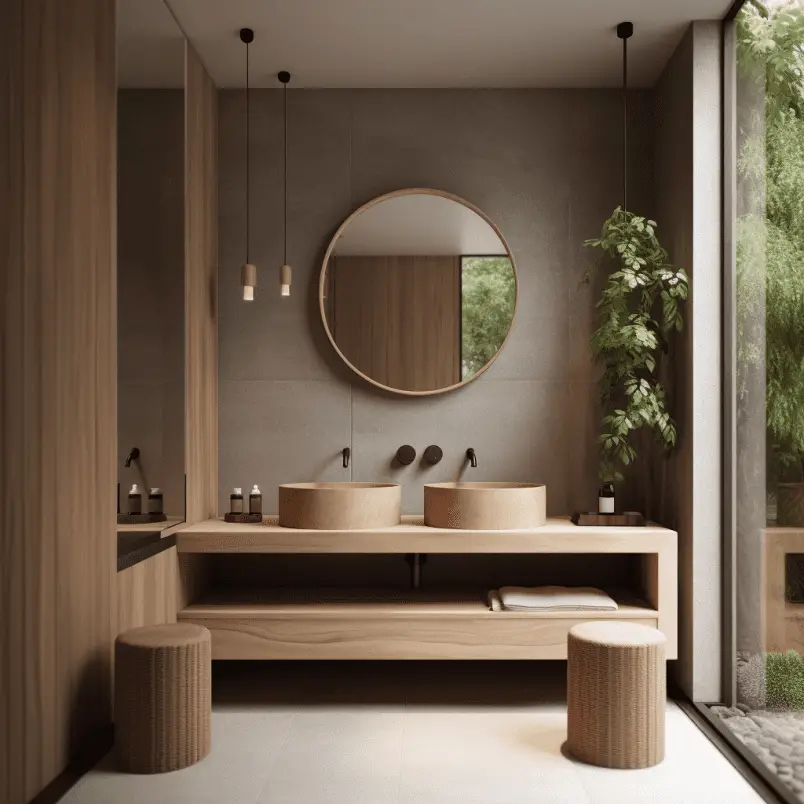
Home office
Opt for a functional and clutter-free workspace with a simple desk, ergonomic chair, and ample storage. Use neutral colors and natural materials to promote focus and productivity.
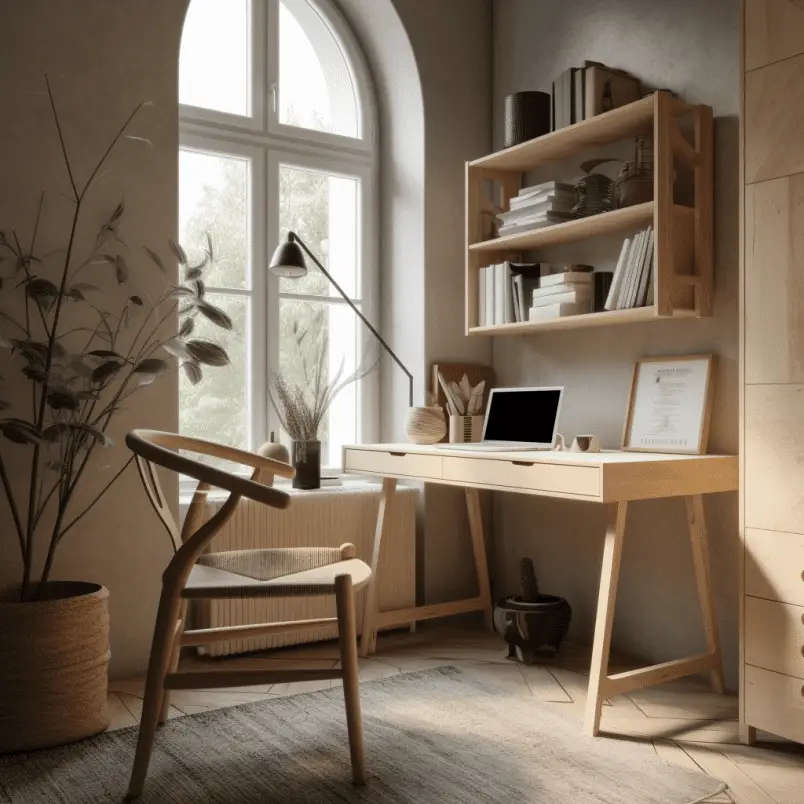
Sustainability in Japandi Design
Japandi design is not just about creating a beautiful and functional space, but also about being environmentally conscious. Sustainability is a key aspect of Japandi design, with a focus on using natural materials and reducing waste. By incorporating sustainable practices into your home decor, you can make a positive impact on the environment while creating a serene and timeless space.
Reduction of waste
Another important aspect of sustainability in Japandi design is the reduction of waste. This means minimizing the amount of waste produced during the manufacturing process as well as reducing the amount of waste generated by consumers. One way to achieve this is by choosing products made from recycled or upcycled materials.
Japandi design also emphasizes the importance of decluttering and only including necessary items in the space. By simplifying your home decor and reducing unnecessary items, you can reduce waste while creating a more peaceful environment.
In addition to reducing waste through product choices and decluttering, Japandi design also encourages recycling and composting. Recycling helps reduce landfill waste while composting turns food scraps into nutrient-rich soil for gardening.
More Japandi Inspo

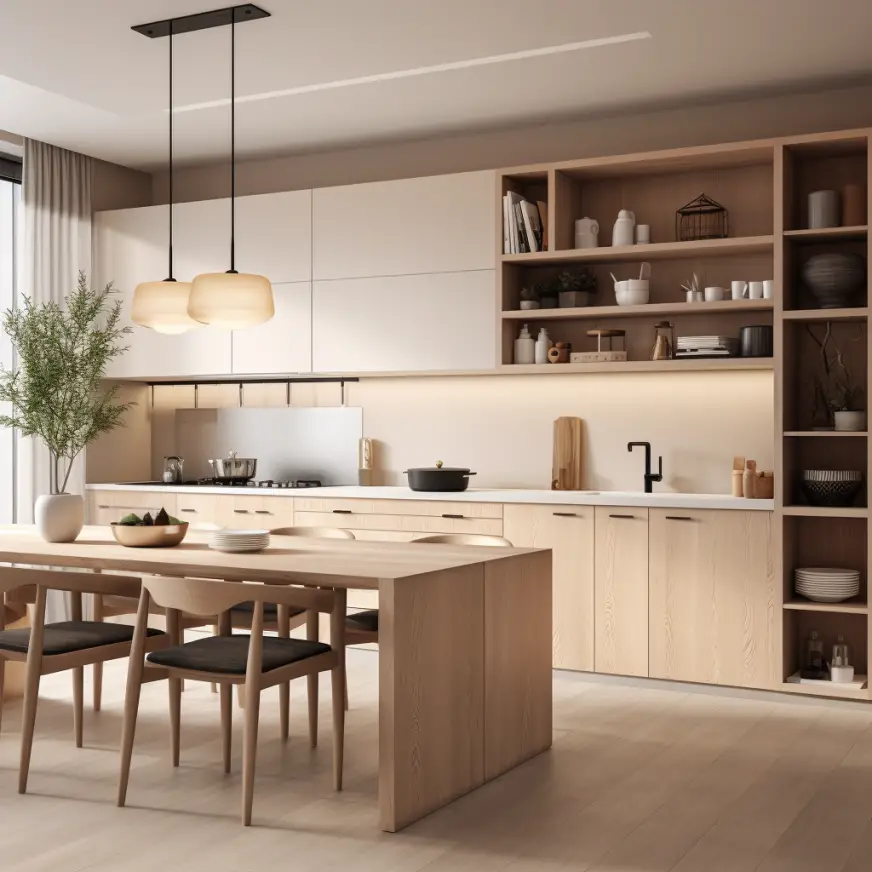
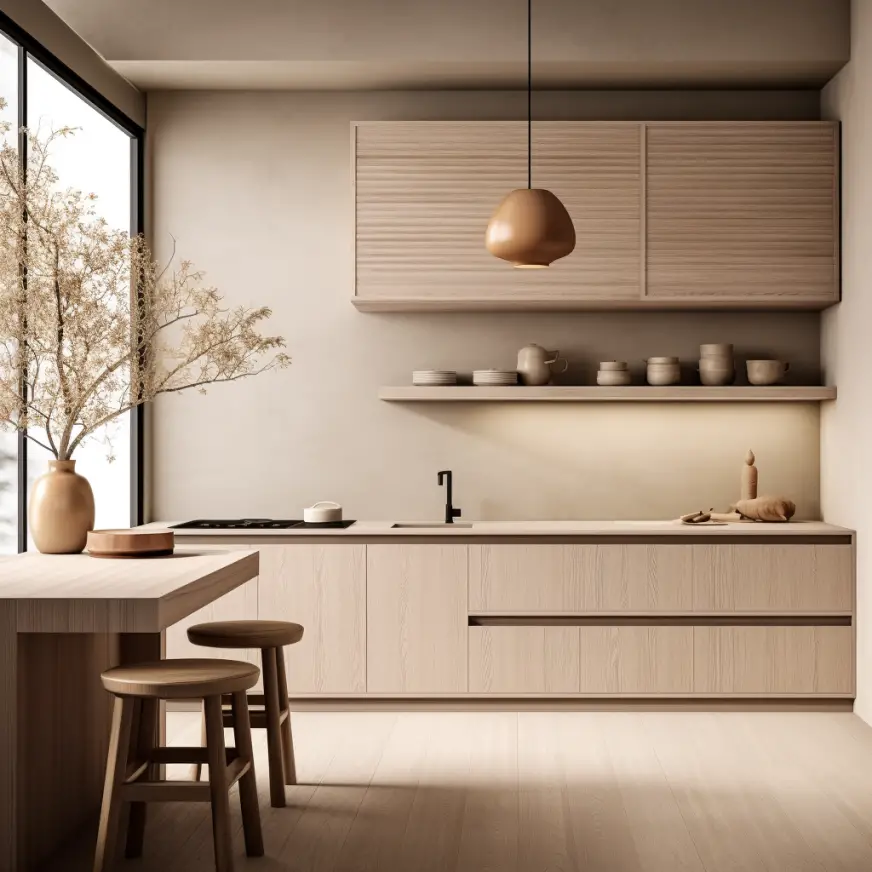
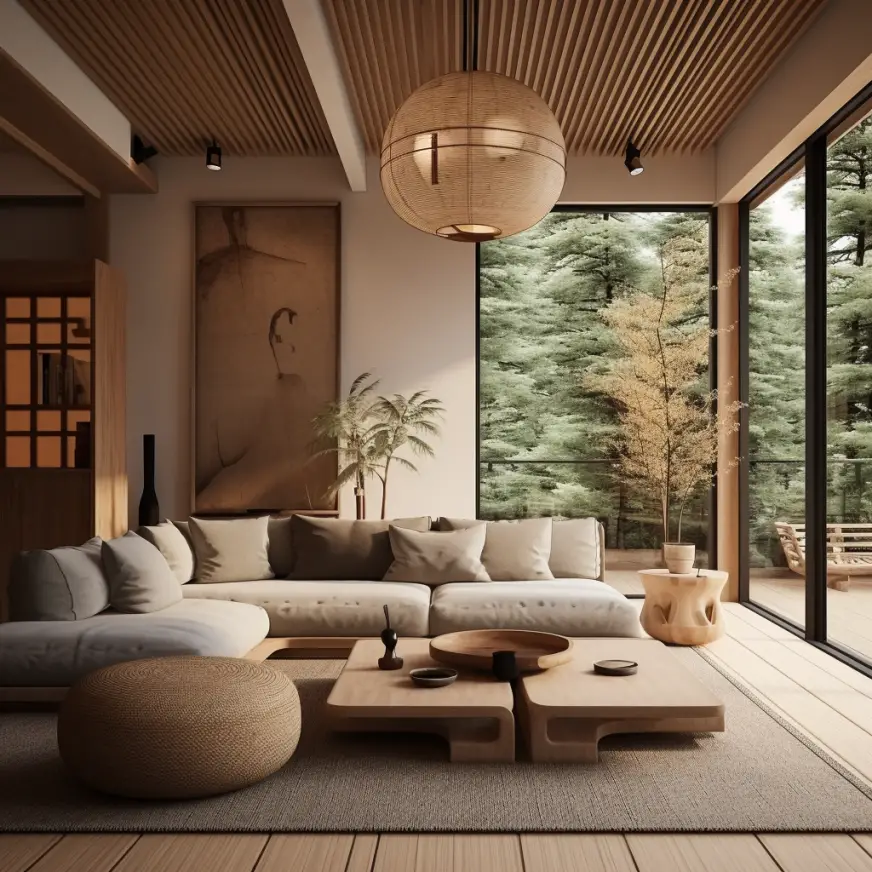
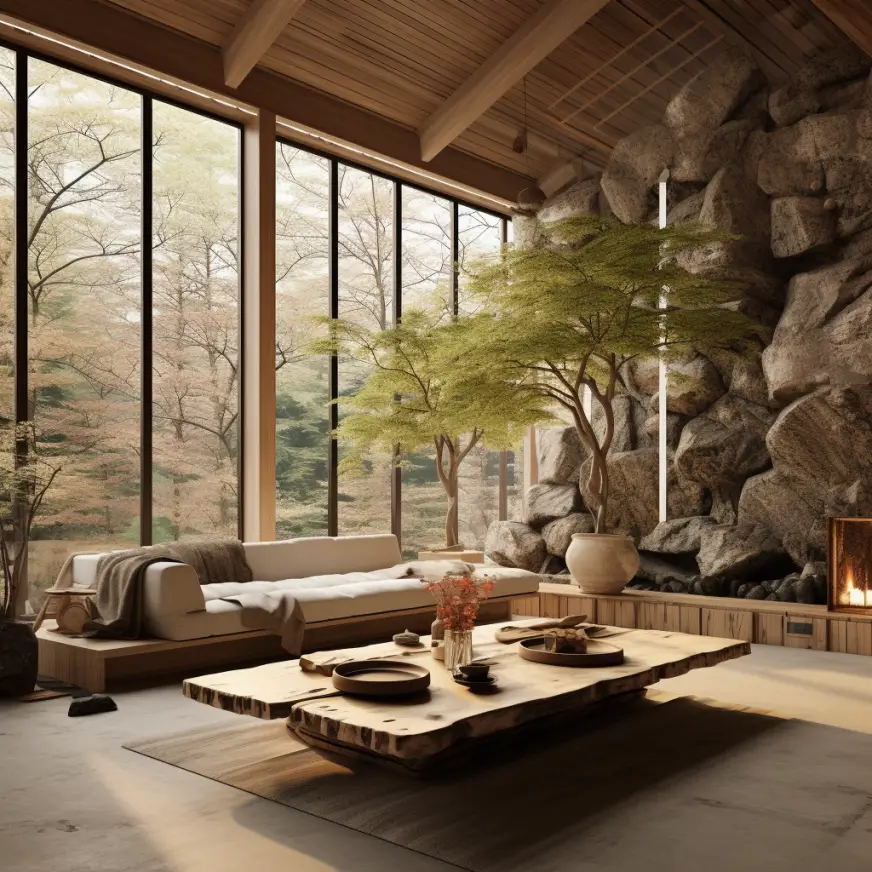

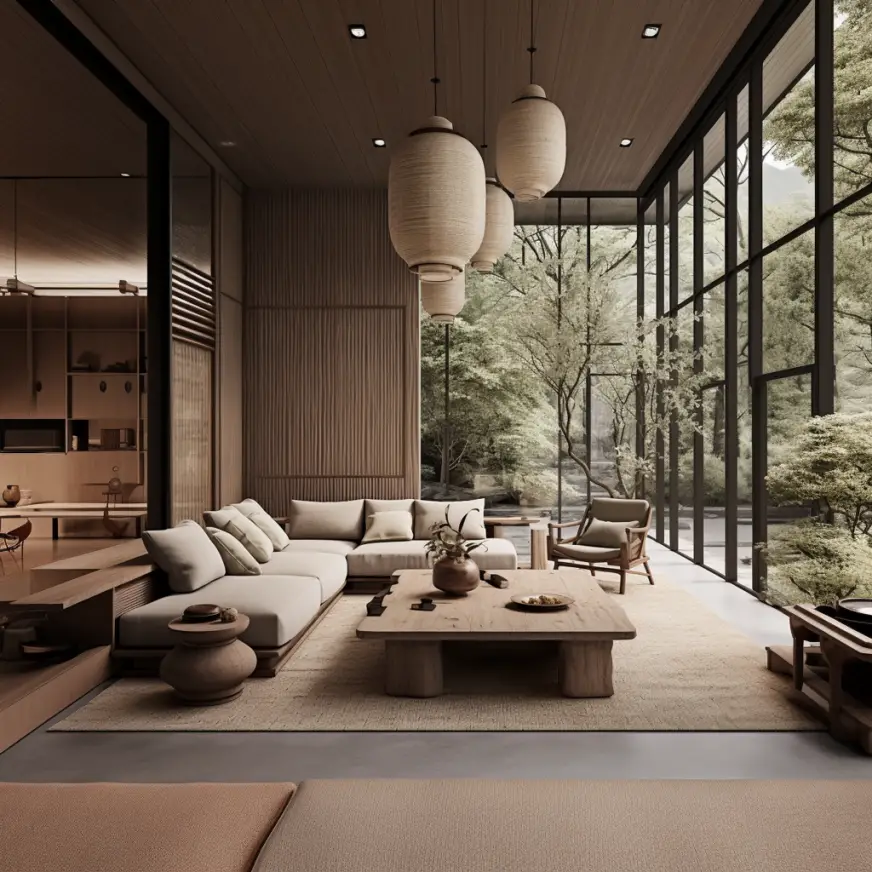
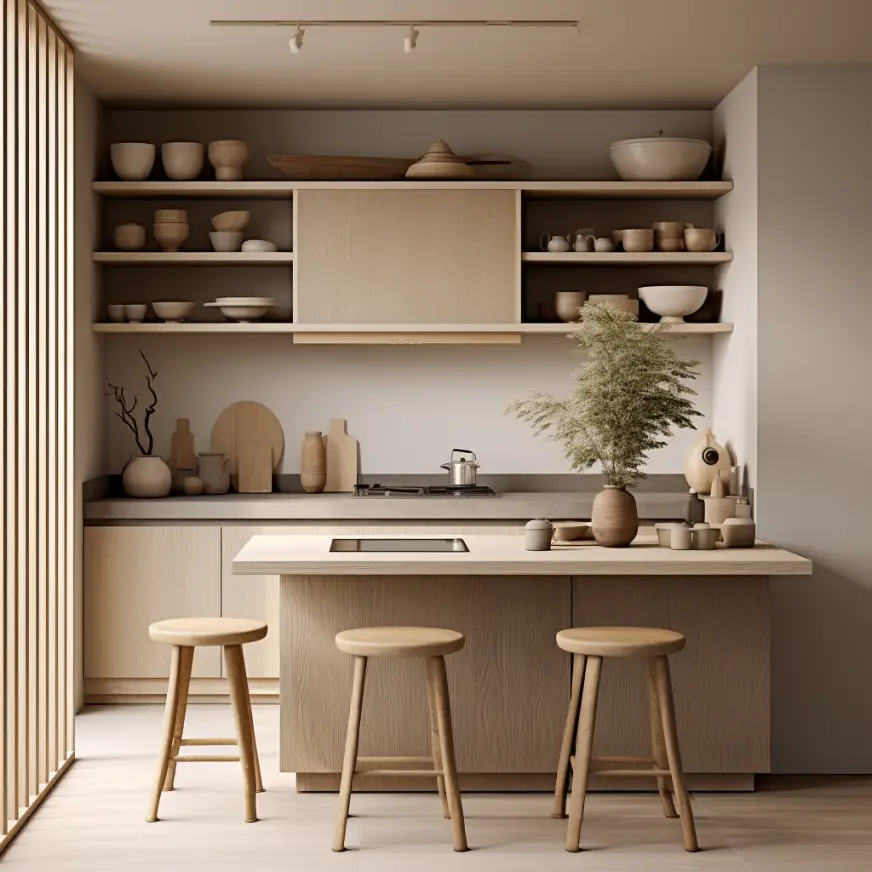
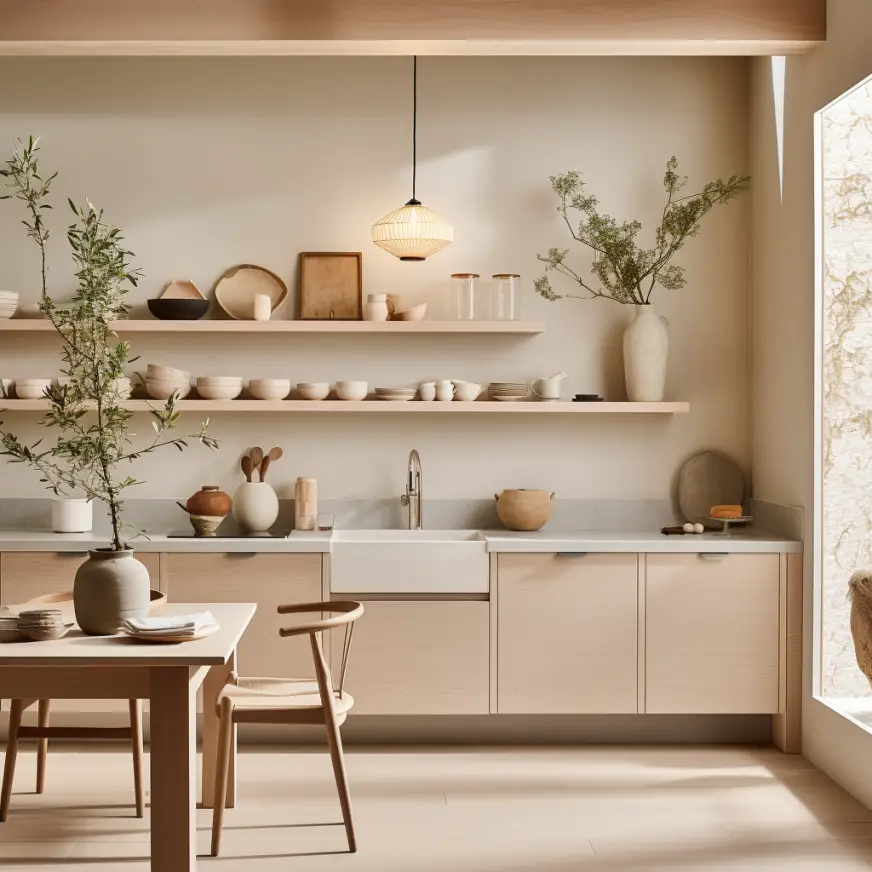




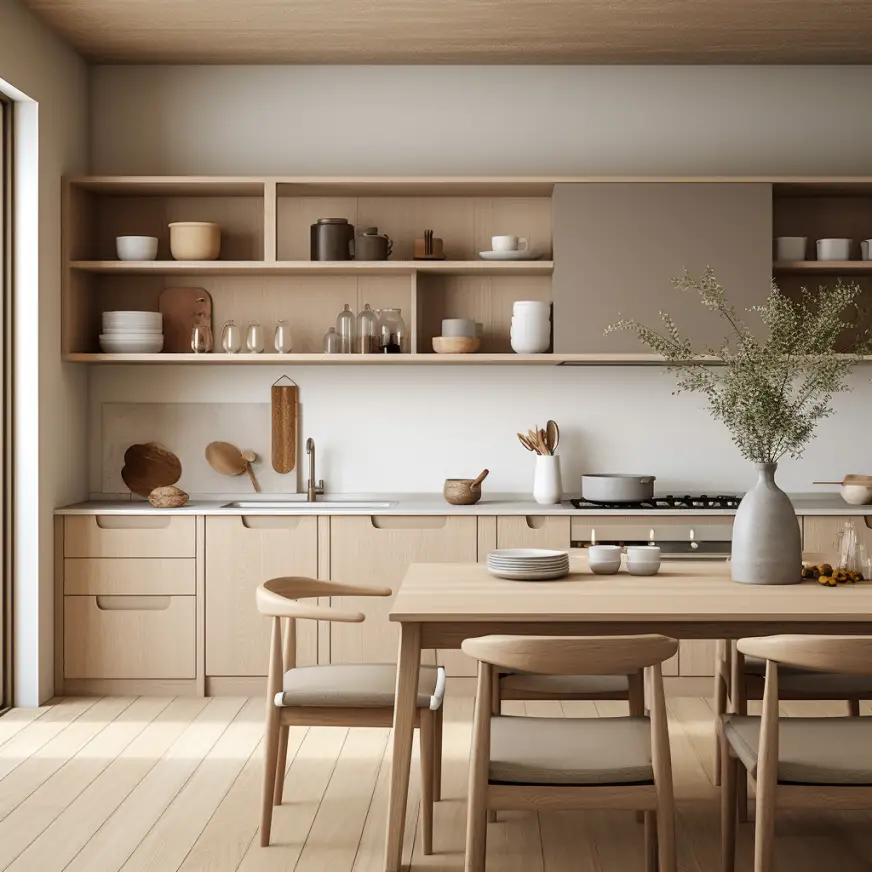
Pros and cons of Japandi Interior Design
Pros:
- Timeless appeal: Japandi design is a timeless and versatile style that can adapt to various trends and preferences over time.
- Calming atmosphere: The emphasis on simplicity, minimalism, and natural materials creates a calming and peaceful environment.
- Sustainability: The use of natural materials and focus on functionality promotes a more sustainable and eco-friendly approach to interior design.
Cons:
- Limited color palette: The neutral color palette of Japandi design may feel restrictive to some individuals who prefer more vibrant and varied hues.
- Cost considerations: High-quality natural materials and well-crafted furniture can be more expensive compared to other design styles.
Conclusion
Japandi interior design style is the perfect fusion of Japanese and Scandinavian design principles, resulting in a calming, functional, and visually appealing living space. By incorporating natural materials, a neutral color palette, and a focus on simplicity and functionality, you can create a harmonious and timeless home that reflects the best of both worlds.
FAQ
Is Japandi Interior Design suitable for small spaces?
Yes, Japandi design is well-suited for small spaces due to its emphasis on minimalism, functionality, and decluttering. The neutral color palette and the use of natural light can also help to create an illusion of a larger space.
Can I incorporate color into Japandi design?
While the primary focus of Japandi design is on neutral colors, you can still introduce subtle pops of color through accessories, artwork, or textiles. Opt for muted and earthy tones that complement the overall aesthetic.
How can I achieve a Japandi look on a budget?
To create a Japandi-style space on a budget, focus on decluttering and simplifying your space. Choose affordable, functional furniture with clean lines, and utilize DIY or thrifted natural materials for accents and accessories.
How do I maintain the minimalist look in a Japandi-style space?
Regularly declutter and assess your belongings to ensure that everything in your space serves a purpose. Keep surfaces clean and clear, and use storage solutions that are both functional and visually appealing.
Can I mix Japandi design with other design styles?
Yes, Japandi can be mixed with other design styles as long as the overall aesthetic remains cohesive. Focus on maintaining the key elements of Japandi design, such as simplicity, minimalism, and the use of natural materials, while incorporating elements from other styles that complement and enhance the Japandi aesthetic.
For example, you can blend Japandi with elements of industrial or modern design by incorporating sleek metal accents, minimalist artwork, or bold geometric patterns. The key is to strike a balance between the various design elements, ensuring that the overall look remains harmonious and true to the Japandi principles.

